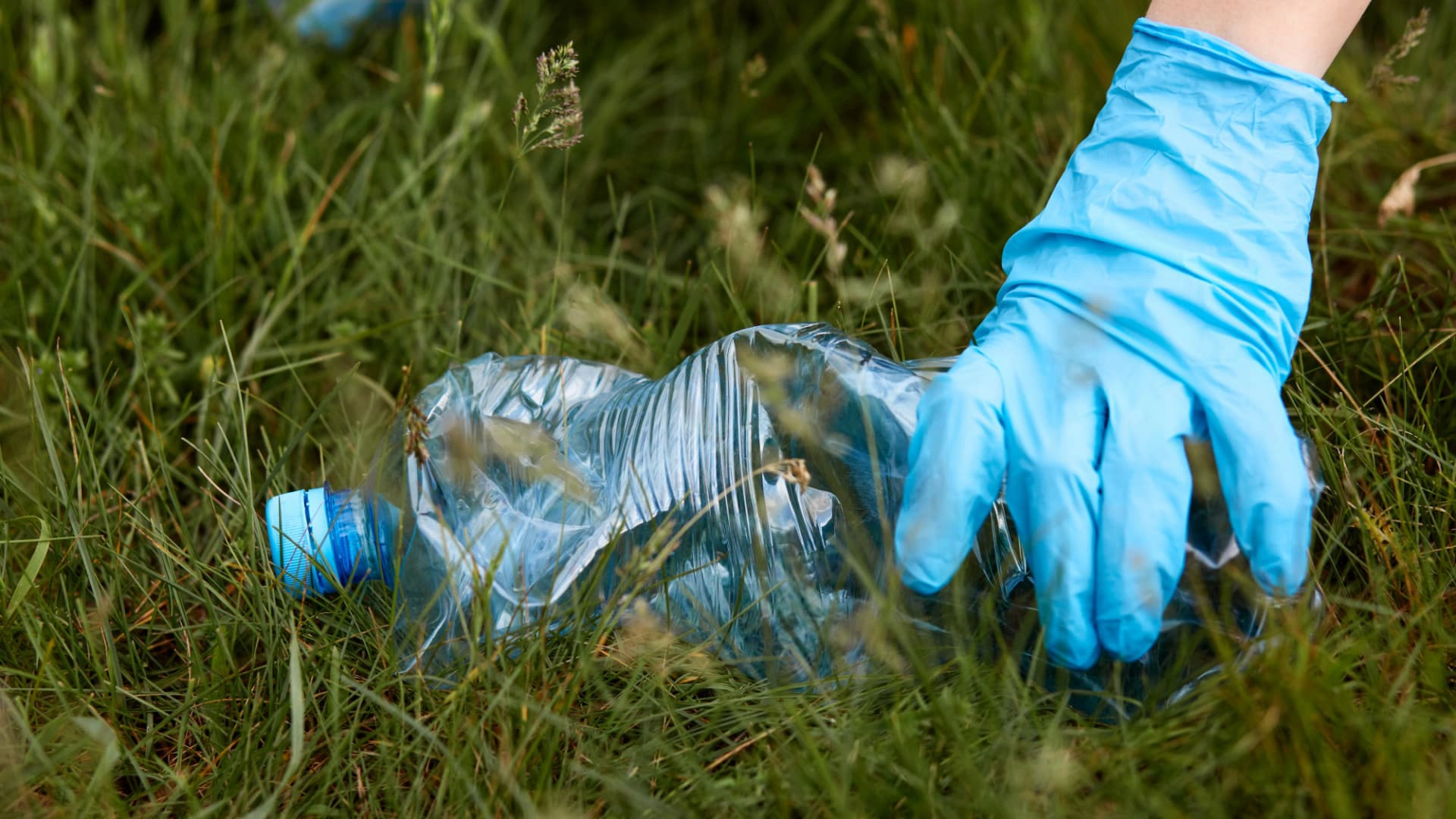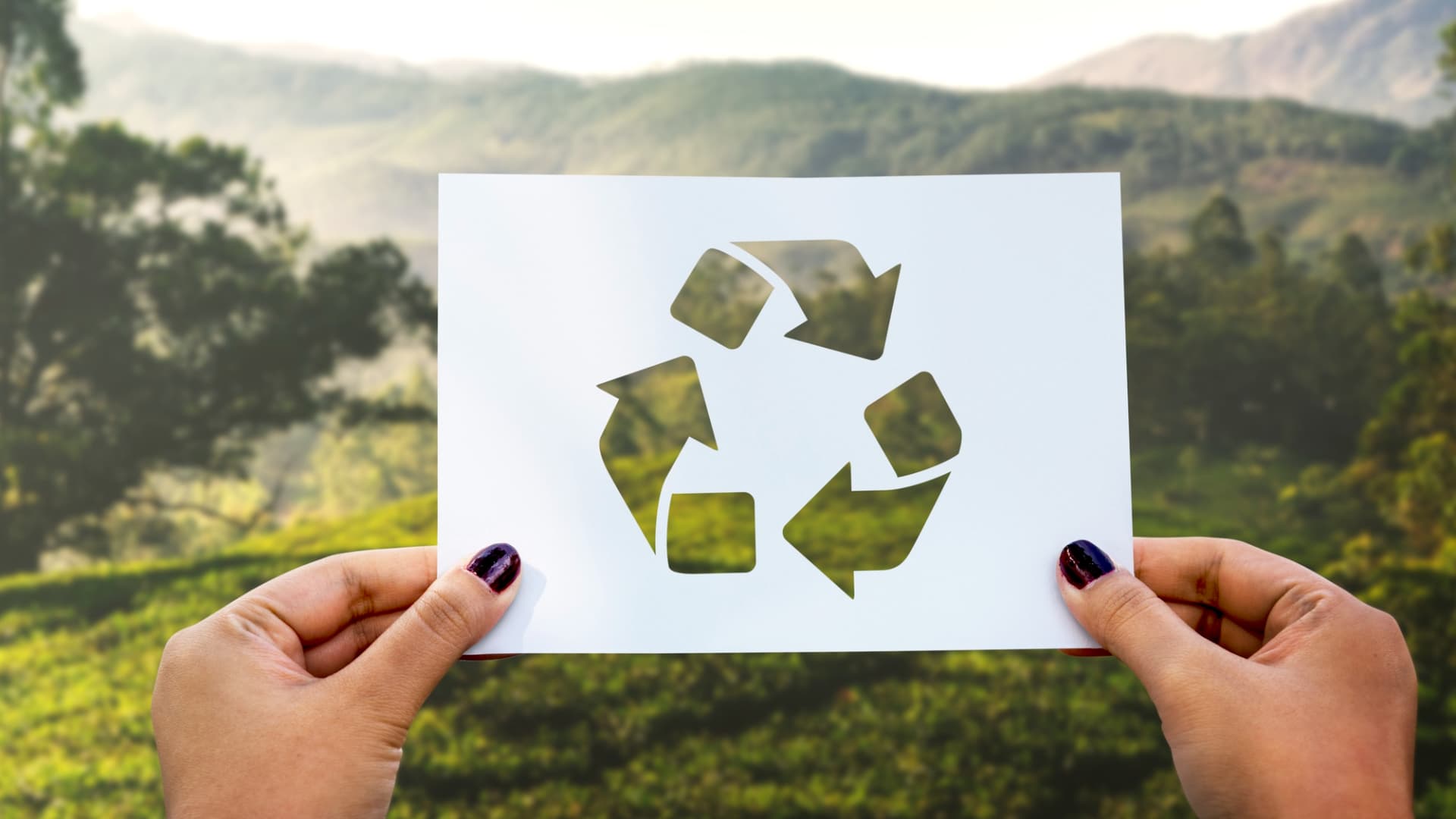
Most of the people do not recycle and live with a substantial ecological footprint, which is unsustainable. In the age of consumerism, companies and advertisements encourage us to consume more and more, to buy unnecessary goods, thus creating waste.
These goods are not always recyclable, meaning harmful substances can leak into the ground, our rivers, seas, and oceans, endangering natural ecosystems.
In the 21st century, sustainable thinking has become more and more important. Now we can feel the effects of global warming: drought in agricultural areas, wildfires, melting ice caps, and dying animals are signs that we need to change our habits.
Instead of cheap new items, sometimes it is okay to repair the old ones. It is not necessary to buy a new shoe every month. But if you do, buy recyclable goods, most importantly recyclable plastics. One-use plastics are extremely harmful to the environment.
Recycle symbol and meaning
Three arrows form a shape of a triangle, pointing to the next one to show the ‘circle of life’. Recycling should be an infinite progress.
The three arrows represent 'reducing', 'reusing', and 'recycling'.

If you think about it, before the industrial revolution, things worked exactly this way: everything we created was made from natural resources.
The cause of the problem is that we made materials that are not recyclable, and the decomposition interval is up to thousands of years.
What contains plastic?
If I say ‘plastic’, you would definitely think of PET bottles, straws, or shopping bags. But today, almost everything contains plastic.
- Cables
- Paint
- Containers
- Packaging material
- Household appliances (cutlery, kettle, vacuum cleaner, everything!)
- Car parts
- Clothes and shoes
In addition, our planet is so contaminated, that our food contains microplastics too. You definitely saw that picture about a turtle and a straw. The used plastic finds its way to the ocean, the fish eat the plastic, then we eat the fish. It is definitely not the ‘circle’ we are looking for.
The next question is: what plastics are recyclable?
What plastics can be recycled?
Here are the types of plastics:
- PET (polyethylene terephthalate)
- PE-HD (high-density polyethylene)
- PE-LD (low-density polyethylene)
- PP (polypropylene)
- PS (polystyrene)
- PVS (polyvinyl chloride)
- Non-categorized ‘other’ plastics.
From this list, only the first four plastics can be recycled. The rest cannot be reused.
The steps of recycling plastics
- Sorting
- High-pressure cleaning
- Pre-treatment
- Grinding
- Granule-making
- Gasification
- Hydrogenation
Recycling in the European Union
In Europe, nearly a third of plastic waste is recycled. The low share of plastic recycling in the EU means significant losses for the economy, and the environment. It is estimated that 95% of the value of plastic packaging material is lost to the economy after a short first-use cycle.
Half of the plastic collected for recycling is exported to be treated in countries outside the EU. Reasons for export include the lack of capacity, technology, or financial resources to treat the waste locally.
As part of the Green Deal, 55% of plastic packaging waste should be recycled by 2030. This would imply a better design for recyclability.
Source: European Parliament
Conclusion
- In the age of consumerism, we consume more than needed, thus creating waste
- The decomposition of plastics lasts ‘forever’
- Recycling plastics is inevitable
- Companies should only use plastics that are recyclable to create goods
- People should recycle
